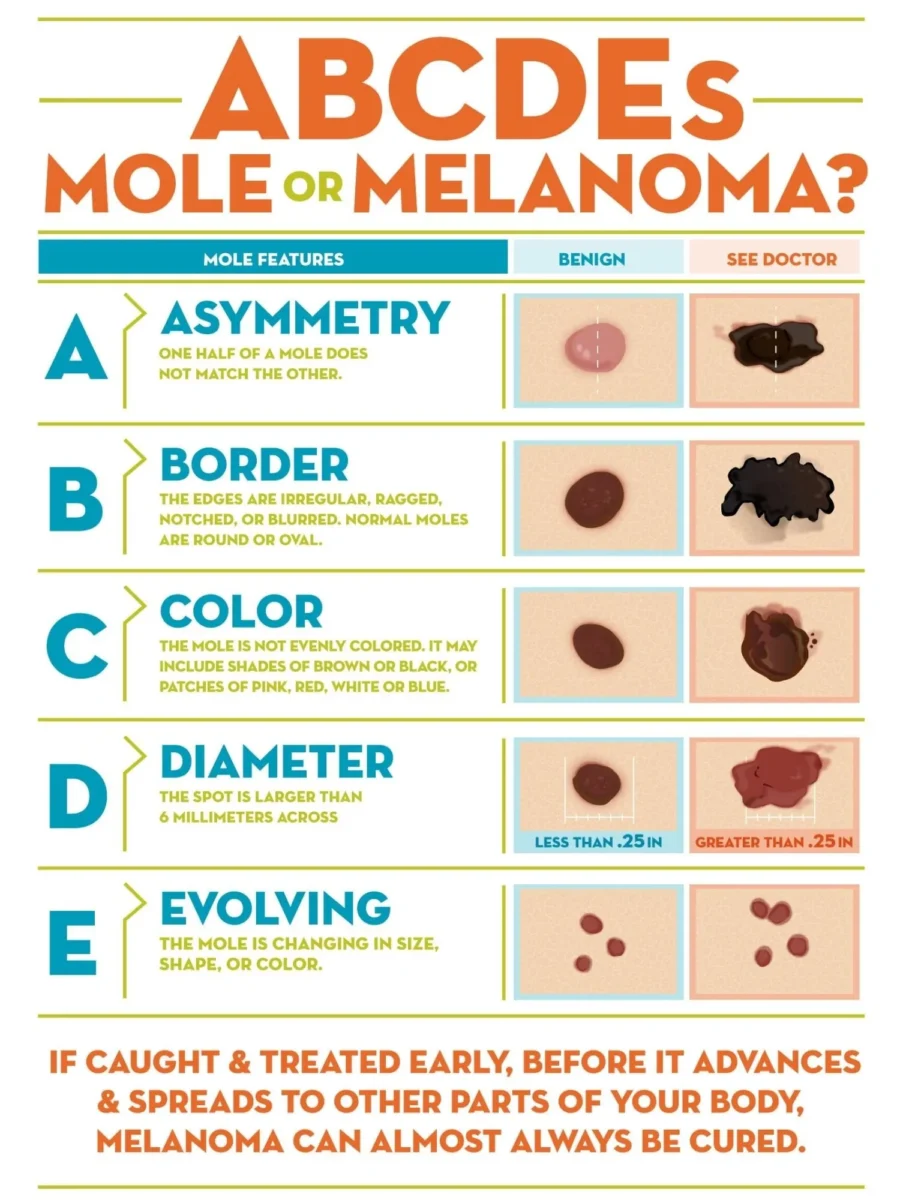Symptoms of malignant melanoma, Skin cancer, ABCDEs of Malignant Melanoma, Early Detection, treatment
Skin cancer, especially malignant melanoma, can be a scary topic. But knowledge is power, and understanding the early warning signs of melanoma can make a world of difference in catching it early and improving the chances of successful treatment.

Symptoms of malignant melanoma
Malignant melanoma, a type of skin cancer that originates in melanocytes, can be a serious and potentially life-threatening condition if not detected and treated early. Understanding the symptoms of malignant melanoma is crucial for early diagnosis and intervention. In this article, we will delve into the key signs to watch out for, empowering you to take proactive steps towards skin health.
Asymmetrical Moles
One of the hallmark signs of malignant melanoma is the asymmetry of moles. Healthy moles are generally symmetrical, meaning if you were to draw a line through the center, both halves would be nearly identical. In contrast, melanomas often exhibit irregular shapes and uneven borders, signaling a potential cause for concern.
Irregular Borders
Keep an eye out for moles or lesions with irregular borders. Malignant melanomas often have edges that are not well-defined, resembling jagged or notched outlines. If you notice any unusual border characteristics, it’s important to seek professional evaluation promptly.
Color Changes
Changes in the color of a mole can be a red flag for malignant melanoma. While moles may naturally have different shades, sudden variations in color, especially the presence of multiple colors within a single mole, could indicate malignant growth. Be vigilant and monitor any mole that experiences such changes.
Diameter Increase
Malignant melanomas typically grow larger over time. Keep track of the size of your moles, and consult a dermatologist if you notice any significant increase in diameter. Early detection is key in preventing the spread of melanoma to other parts of the body.
Evolution of Moles
Pay attention to changes in the appearance of existing moles. Any evolution, such as a mole becoming raised, developing itching or tenderness, should raise concern. Regular self-examinations can help you identify these changes early on.
Itching or Bleeding
Malignant melanomas may manifest with unusual symptoms like persistent itching or bleeding. If you observe such symptoms in a mole, it is crucial to consult a healthcare professional promptly. These signs could be indicative of an underlying issue that requires immediate attention.
Satellite Lesions
The presence of smaller lesions surrounding a primary mole, known as satellite lesions, may suggest the spread of malignant melanoma. If you notice any new spots or lesions near an existing mole, seek medical evaluation promptly.
Conclusion
Vigilance and early detection are paramount in the battle against malignant melanoma. Regular self-examinations, coupled with professional dermatological assessments, can aid in the timely identification of potential issues. If you observe any of the aforementioned symptoms or notice changes in your skin, do not hesitate to consult a healthcare professional for a thorough evaluation. Your skin’s health is a priority, and proactive measures can make a significant difference in the successful management of malignant melanoma.
Recognizing the ABCDEs of Malignant Melanoma: Early Detection Saves Lives
Remember, early detection is key with melanoma. When identified and treated in its early stages, melanoma is highly curable. So, let’s dive into the ABCDEs of melanoma, a simple yet effective guide to recognizing potential changes in your moles:

A – Asymmetry: Does one half of the mole look different from the other?
B – Border irregularity: Are the edges of the mole ragged, blurred, or notched?
C – Color change: Has the mole changed color, becoming darker, uneven, or reddish?
D – Diameter: Has the mole grown larger than 6 millimeters (about the size of a pencil eraser)?
E – Evolution: Has the mole changed in appearance over time, even subtly?
Beyond the ABCDEs:
While the ABCDEs are a valuable starting point, it’s important to remember that not all melanomas will perfectly fit this criteria. Be on the lookout for any moles that seem unusual or different from your others, even if they don’t tick all the ABCDE boxes.
Here are some additional warning signs to be aware of:
- Bleeding or oozing from a mole
- Itching or tenderness
- New moles appearing quickly
Early action is crucial:
If you notice any changes in your moles or any of the above warning signs, don’t hesitate to schedule an appointment with your doctor. Early diagnosis and treatment can significantly improve the prognosis for melanoma.
Remember:
- Regular skin self-exams are vital for early detection.
- Use the ABCDEs and additional warning signs as a guide, but don’t hesitate to seek medical advice if something seems off.
- Sun protection is key to preventing melanoma in the first place. Seek shade, wear protective clothing, and apply sunscreen with an SPF of 30 or higher daily.
By being proactive and informed about the symptoms of malignant melanoma, you can empower yourself to protect your health and potentially save your life. Remember, knowledge is power, and early detection is key in the fight against skin cancer
Also read:
Brain Hack: 6 Neuroscience secrets to Unlock the learning faster
What happens if you eat too much salt in one sitting?
Don’t Miss the Signs: Could Your Baby Have Primary Congenital Glaucoma?
Join WhatsApp channel: Stay updated on pharmaceutical job opportunities, walk-in interviews, industry news, events, and pharma guidelines by joining our WhatsApp channel today.